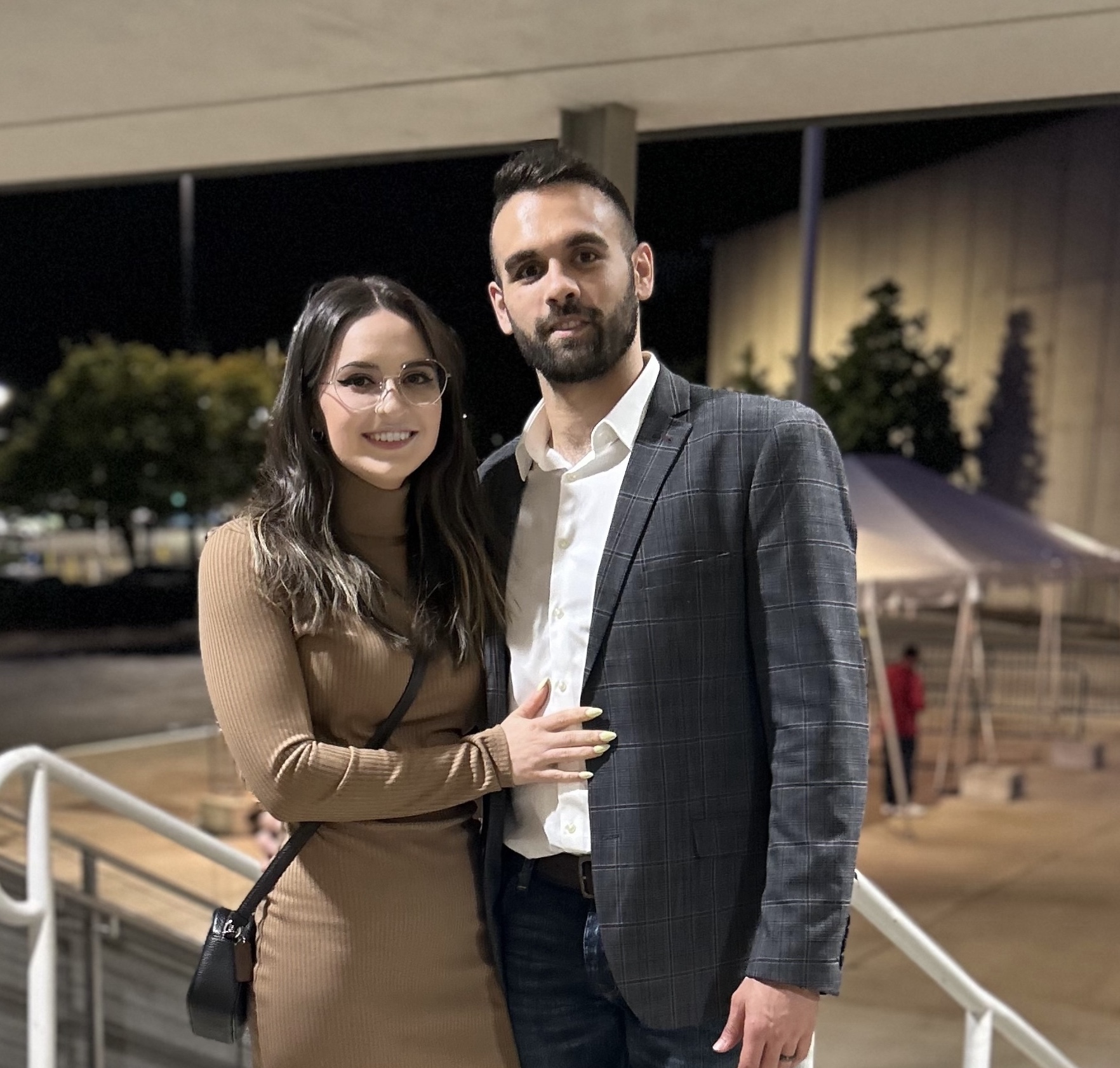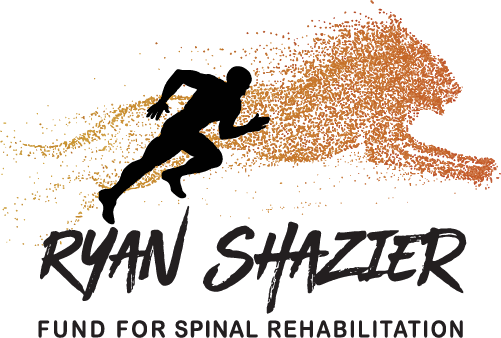by Cathy Cuff-Coffman
How a one-in-a-million spinal cord abscess paralyzed a young man–and how he overcame it.
Imagine: Your life is going better than “according to script.” You’re 30 years old, your healthcare information technology software career is stable, with plenty of room for advancement.
You married your long-time girlfriend six months ago and recently bought your first home together.
Then, one morning, you wake up unable to move.
You are paralyzed.
It sounds improbable, but welcome to the world of Steve Cramer.
From “Yinz” and “Yo!” to “Y’All”
Cramer and his wife, Erica, are rabid Pittsburgh fans. Cramer is from Birmingham, AL, and his wife, Erica, is from the Philadelphia, PA area.
Cramer’s father is from outside of Pittsburgh, PA. “His (influence) made me a HUGE Pittsburgh sports fan,” gushes Cramer, briefly steering our conversation to the Steelers’ late Franco Harris and former player Ryan Shazier, who suffered a spinal cord injury in 2017.
Now living in Birmingham, AL, Cramer has never lost his passion for Pittsburgh sports or for staying fit.
“Life was great.,” he says, reminiscing about early 2022. “I was in great shape and worked out like a madman.”
But looking back, Cramer knew there was something amiss with his body.
Congenital Starting Point
He was born with Scheuermann’s kyphosis, a rigid form of convex curvature of the thoracic spine caused by anterior wedging of greater than 5 degrees across three consecutive vertebrae. As Cramer grew, his thoracic vertebrae did not grow along with him. His spinal curve became more noticeable–and lately, problematic.
“An average person’s spine has a normal curve and normal-sized vertebrae,” explains Cramer. “With Scheuermann’s, what happens is that when you’re going through adolescence and puberty, your thoracic vertebrae are really thin and don’t develop as much as they should.”
Then, he explains, the thoracic spine starts to collapse, and you get a hunch that your vertebrae are very thin.
“I knew for months something was wrong,” says Cramer, speaking about the spring and summer of 2022. “I felt so off.” He notes that he had some tremors and weird reflexes in his back.
Searching for Answers
Cramer went to several doctors, but they couldn’t pinpoint why he felt weird or what was happening to him. After about three months, he started getting severe back spasms.
“I had gone to the doctors multiple times,” he says. “I went to my primary doctor just a couple of weeks before it got really bad. And I went to several specialist neurologists, and they couldn’t figure it out.”
Cramer was in New Hampshire on a vacation when he had excruciating back pain. He obtained a shot to get through the pain.
The couple returned to Birmingham, AL, and Cramer had some numbness in his feet. He first attributed it to a slipped disc. “But I also wasn’t telling Erica that I was waking up in a puddle of sweat,” he confides, “so the last week I was thinking I had cancer, to be honest, and I didn’t want to scare her.”
Spasms Beget Abscess
“And that’s when I went to sleep after a night of terrible spasms,” he says, “and woke up paralyzed.” His wife took him to the emergency room, and he was diagnosed with an Epidural Abscess at T4-T6.
“When I heard that, I was in complete shock.”
Cramer called his regular back doctor “a great guy. He’s a straight shooter. He said the chance of someone my age getting an abscess is like, I have a better chance of winning the lottery.
“Unfortunately, I already had Degenerative Disc Disease on the thoracic spine because of Scheuermann’s Kyphosis,” says Cramer. “My doctors didn’t think I would walk again without assistance due to the size of the abscess and my preexisting condition.”
Cramer’s physicians immediately operated to remove the abscess, which is a massive infection that comes with its own set of dire consequences, including sepsis. He also had a laminectomy from T4-T8.
The entire process rendered Cramer paralyzed, and he described his first days after surgery as “Long and rough. I had loads of pain and spasms, he explains, with no movement. It was mentally exhausting.”
DeMotivation
Cramer and his wife weren’t thrilled with his progress. “While in Grandview Hospital in Alabama, I didn’t get out of bed one time, on a cocktail of pain and paralysis meds that dulled my senses and killed my motivation,” says Cramer.” “I didn’t even get in a wheelchair.”
Cramer had horrible spasms and clonus at the same time, and it seemed that nothing was being done to move him out of those situations.
Then, about two weeks into Cramer’s post-op stay, his wife Erica started researching SCI facilities. She and Cramer’s doctor, who “had a lot of pull,” secured a bed for Cramer at the renowned Shepherd Center in Atlanta, GA.
Hit The Ground “Wheelin’
The work began as soon as Cramer got his “bed” at The Shepherd Center. “The first night they made me get in a wheelchair,” he says. “It hurt bad,” admits Cramer. “But they started as soon as I got there. You’re out of bed, can’t sit, and it was good.”
And that cocktail of drugs? “Shepherd got me off all the pain pills. I think I stopped taking pain pills in general after about four weeks.”
Cramer theorized that he had pain, like all SCI athletes, but couldn’t work out if he was high.
He spent three months at Shepherd Center. “The first month was spent learning how to use the wheelchair,” says Cramer, along with stretching and light strengthening exercises.
“I also spent a lot of time getting on a consistent bowel program,” admits Cramer. “When your bowels aren’t working, and you’re trying to get everything normal ‘down there’ as best you can, you know, it sucks!” (Says every SCI athlete that has neurogenic bowel and bladder issues!)
(Cramer’s bowel and bladder function did return after about two months.)
Cramer’s breakthrough moments came every day, little by little. “I just kept working out very consistently and doing all my exercises,” he says.
Dedication
Erica slept in the hospital; at night, they would build on the exercises Cramer learned that week. It also helped that he always worked out and was in great shape before his abscess.
“Around week five or week six, I started walking with a walker,” exclaims Cramer. “It was ugly. I looked like a robot!”
But because of his dedication to movement and working the program Shepherd prescribed, Cramer’s clonus started improving. “As soon as the clonus began to get better,” says Cramer, “I said, ‘This is go-time!’”
“I was a man on a mission,” Cramer continues. “And I just kept going and going and going as much as I could.” He was doing laps around The Shepherd Center with my little walker.”
Cramer visited the Shepherd gym independently, doing what he could, “and I kept getting better.”
Doin’ It His Way
Admittedly hard-headed, he says he eschewed ankle-foot orthotics (AFOs) and snuck in many “forbidden” exercises, like “sit-to-stands.” “But I trusted my body, what I was doing, and was in a safe place in case anything went wrong,” he says.
As far as tools, “The only tool that works is working as hard as possible as much as possible,” advises Cramer. “Whatever moves post SCI, keep moving it when that movement returns as much as possible.”
Once Cramer returned home from The Shepherd Center, he continued his rigorous workout plan. But during all those fantastic physical gains, he almost forgot about his most powerful muscle: his mind.
Cramer was home the first time he contracted a fever; and fever was one of the symptoms of his abscess. “I had a full-on panic attack; I thought I was getting an abscess again,” he says. “It began to get hard, because there were specific triggers where I would feel like I have an abscess again.”
Mental Health Focus
Each time Cramer experienced a trigger, he had a panic attack, and all the actual symptoms would return. “It was really hard for me to differentiate reality for the first six months (at home),” he admits.
“You realize that the mind is very powerful. It could take me to where I would have to crawl into the house,” he says.
“My brain would go into PTSD, and then it would tell me, you have an abscess again,” Cramer says, sadly. “It was really hard to handle.”
How did he handle this part of his injury? “I went to a lot of mental therapy for PTSD,” he says. He opened up to the therapist, and through doing that mental work, he was able to process that the abscess was not coming back.
Cramer is now walking four to five miles a day unassisted. He and Erica bought their first home, and his career as an IT guru for an established healthcare research firm fits him perfectly.
“I have been blessed beyond belief.”
Shalieve
Wisdom

Steven Cramer's Shalieve Words of Wisdom
Take nothing for granted. “Life isn’t always handed to us according to our script. The more we can accept the changes, the better our lives are.”
Learn Patience. "This process has taught me patience, and it has strengthened my faith."
Don't give up. “Don’t compare your progress with that of others. Give 150% in rehab, and whatever moves, move it, and never stop pushing.”
Take care of your mental health. “The mental hurdles are way harder than the physical. Your mental health will need to be tended to as much as your physical health.”





